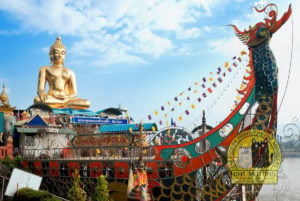Wat Ram Poeng Tapotaram - Vipassana Meditation Training Center
Wat Ram Poeng (also known as Wat Ram Poeng Tapotaram or Wat Tapotaram), a tranquil and picturesque Buddhist temple located in Chiang Mai, Northern Thailand, is highly regarded for its exquisite wood carvings and impressive architectural details that reflect the region’s rich cultural heritage. The temple is especially renowned for its meditation center, which warmly welcomes both local and foreign visitors seeking to learn and practice Vipassana meditation techniques. Set within a serene and lush environment, Wat Ram Poeng Tapotaram provides a calming atmosphere for spiritual growth and personal reflection. Offering a range of meditation courses, experienced instructors, and comfortable accommodations, the temple attracts meditation enthusiasts from around the world, making it an essential destination for those seeking a genuine and transformative Thai meditation experience.
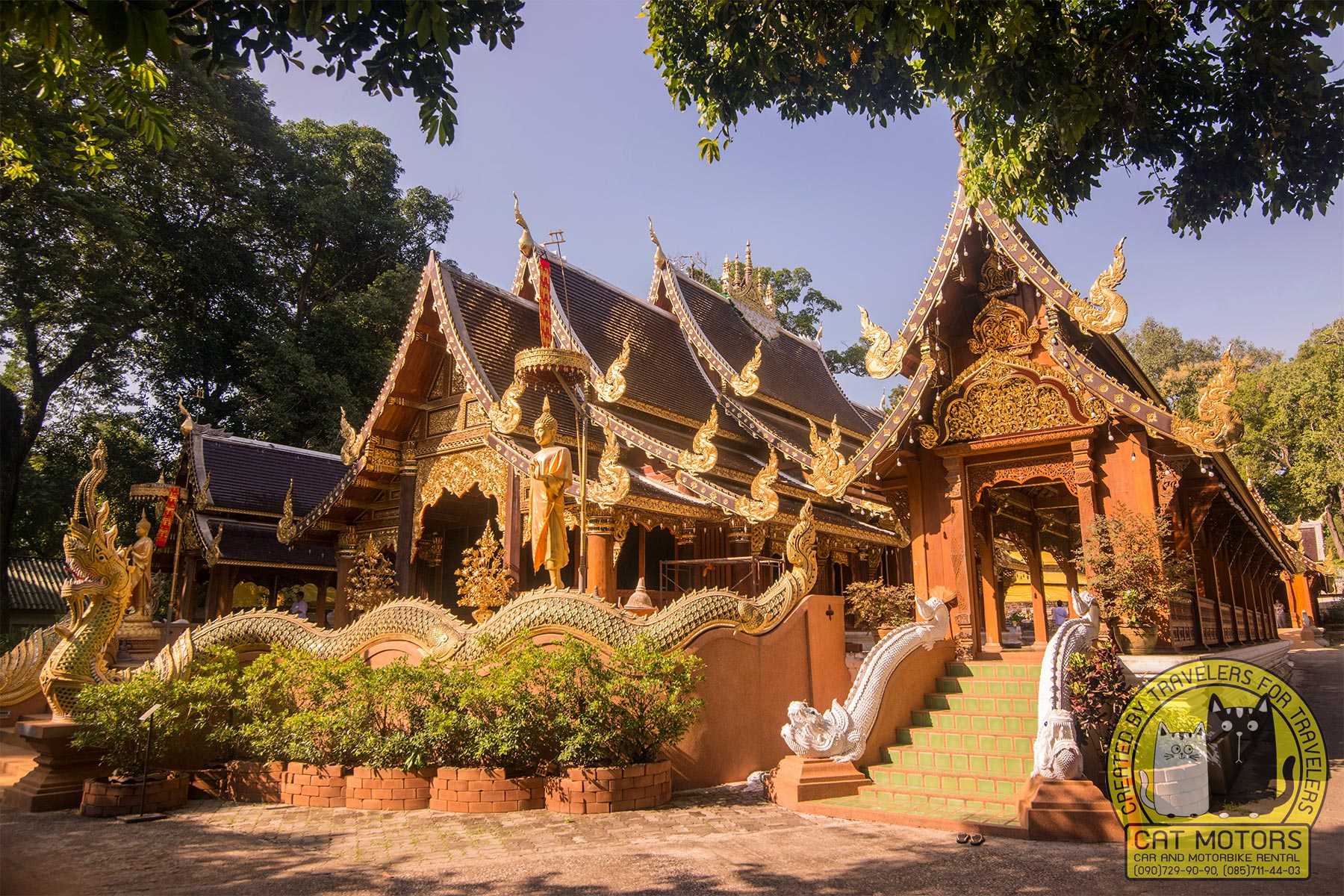
The temple was founded in 1492 by Phraya Yot Chiang Rai, ruler of the Lanna Kingdom, in memory of his father Thao (Prince) Bunrueang, the only son of King Tilokaraj who had been executed by his grandfather on suspicion of disloyalty. Its other name is Wat Tapotaram, which roughly means “the monastery of ascetic practices.”
The main chedi in the temple is also said to have been founded in 1492, but has been rebuilt several times. The temple also houses a large library with the texts of the Tripitaka, the main Buddhist writings, written down by students of the Buddha Guatama Shakyamuni. “Tripitaka,” literally means “Three baskets.”
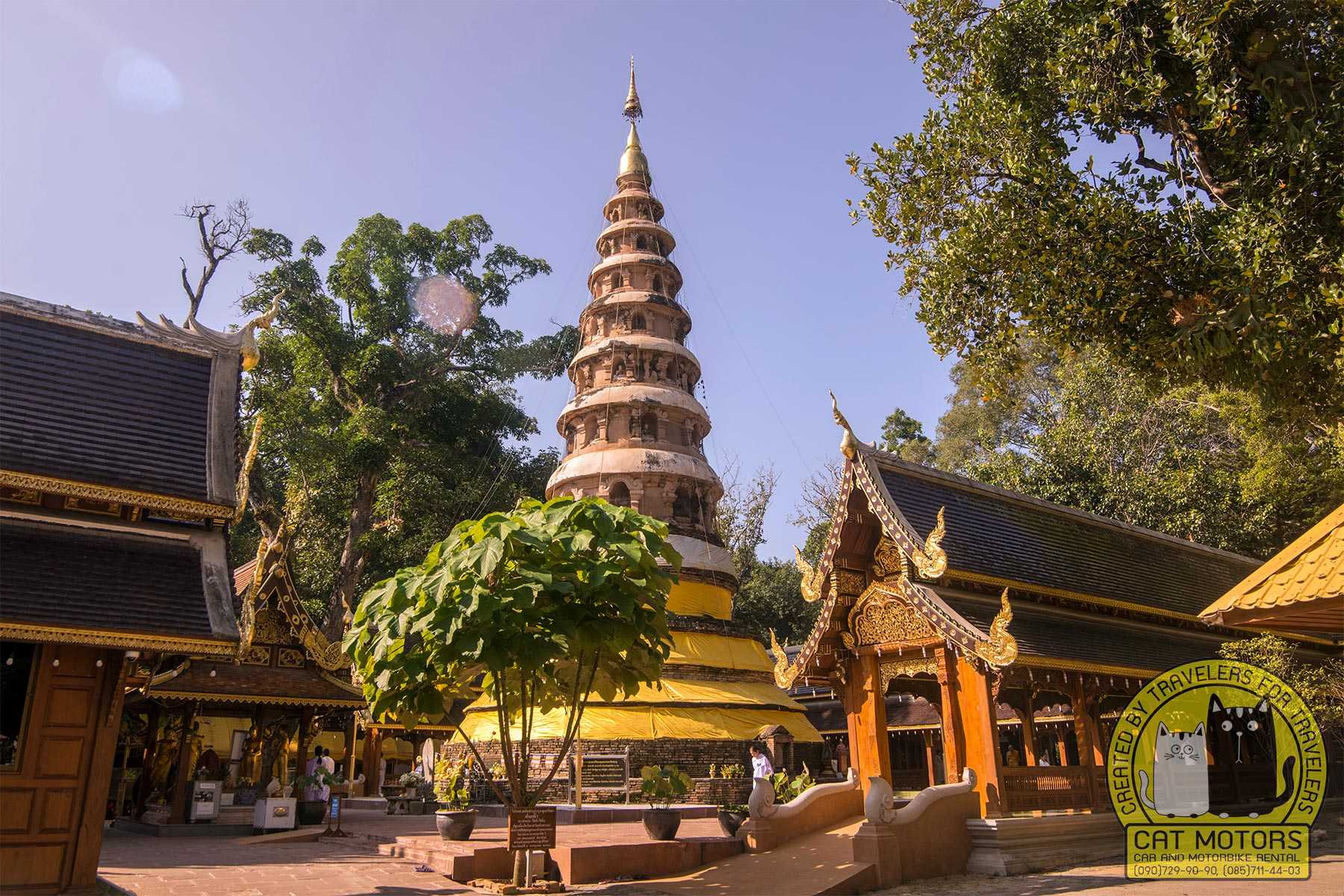
The fact is that when the Buddha went to Nirvana, his disciples got together and wrote down the Guru’s words for posterity, and then divided them into three parts, according to the meaning of the teachings. The library keeps translations of the Tripitaka in Thai, English, Sanskrit, Sinhalese, Burmese, Korean, and Chinese.

For a long time, beginning with the Burmese occupation, this monastery was abandoned. During World War II, Japanese occupation forces also severely damaged the already ruined temple.
The modern reconstruction of the viharn (main assembly hall) began in 1971. In 1974, Phrakhru Pipatkanapibarn, abbot of Wat Muang Mang and the head teacher of the meditation school, moved to the temple to open another meditation school. The meditation course at Wat Ram Poeng began in 1975.
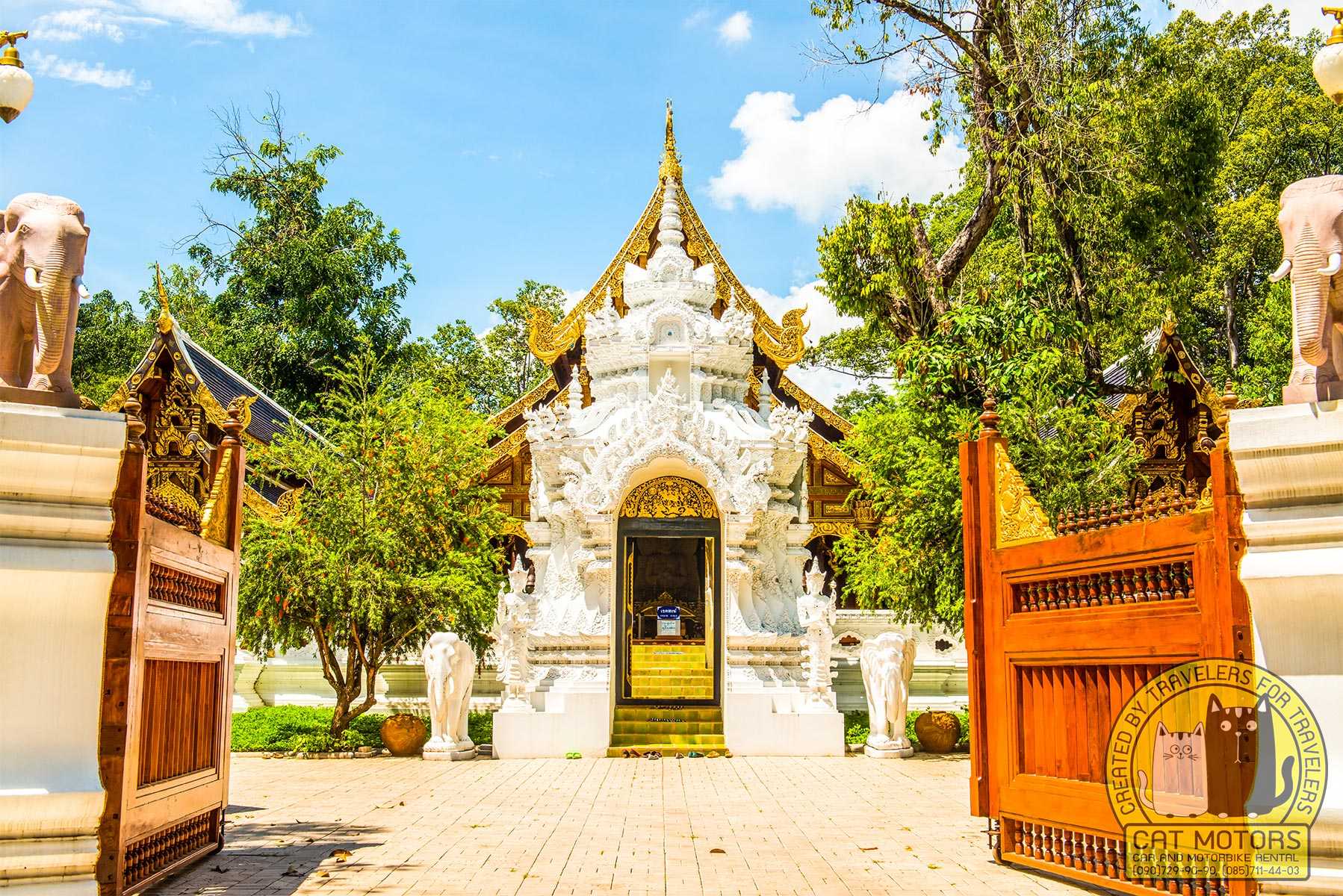
The temple is now known mainly for the international meditation center at the temple. The Fundamentals of Vipassana Meditation are taught here in English, and anyone who is seriously interested in Buddhism and has come to Chiang Mai can go to this temple for a retreat.
A full course of vipassana lasts for 26 days, but it is possible to enter the temple for any length of time, as the training here is quite individualized. All newcomers to the temple traditionally wear white clothing, which you will be given here.
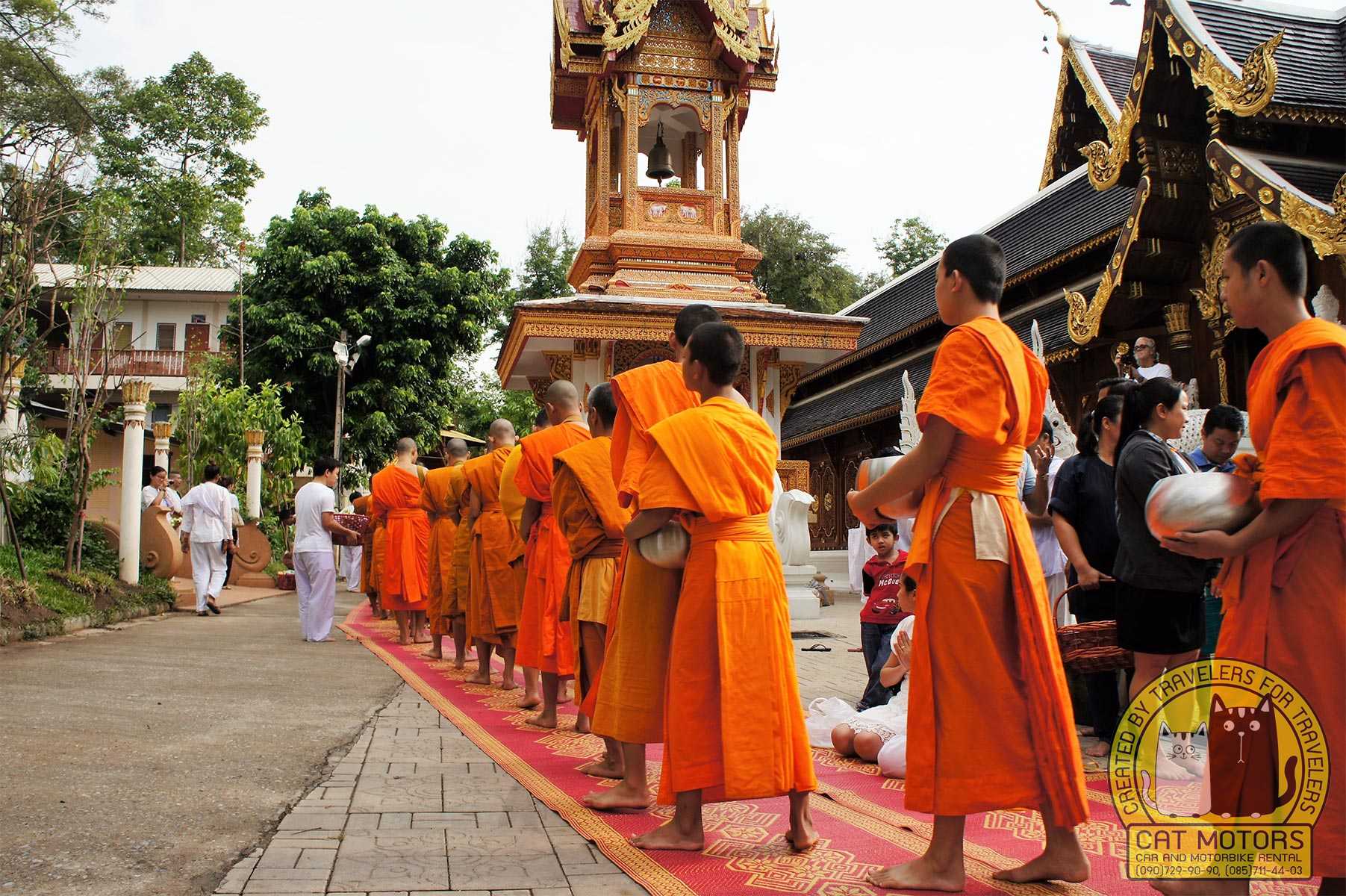
Some novices in the temple practice a vow of silence and other ascetic practices. So be courteous to those around you and don’t disrupt someone else’s meditation.
Accommodation and instruction at the Wat Ram Poeng temple is traditionally free, but you must still leave a donation when you leave the temple.
Video Review
FAQ
The name of the temple means “Monastery of Memory” because King Yod Chiengrai founded the monastery in 1492 in memory of his father.
The other name of the temple is Wat Tapotaram, which means “Monastery of ascetic practice.” Also called the Northern Insight Meditation Center.
In the temple, intensive vipassana meditation practices based on the Four Foundations of Mindfulness are practiced, as well as Mahasi Sayadaw techniques used.
The approximate number of monks and novices is as follows: monks 60-70 people; novices about 20 people; nuns 60-70 people; laypeople 40-60 people, about half of them foreigners.
Wat Srisuphan, also known as the “Silver Temple,” is a fascinating temple known for its intricate silver craftsmanship and unique Lanna-style architecture.
The Chiang Mai Old City, surrounded by ancient walls and a moat, is a must-visit destination for exploring the history, architecture, and culture of the region.
The Chiang Mai City Arts & Cultural Centre is an excellent museum to learn about the history, culture, and traditions of Chiang Mai and Northern Thailand.
The Huay Kaew Waterfall, located at the base of Doi Suthep Mountain, offers a picturesque setting for enjoying nature and a refreshing break from the city.
The Chiang Mai Saturday Walking Street Market and the Warorot Market are popular choices for discovering local handicrafts, Thai street food, and a vibrant atmosphere.
Yes, Baan Kang Wat is a recommended destination to experience Chiang Mai’s thriving art scene. This unique artist village features a collection of wooden buildings that house art studios, galleries, workshops, and local crafts shops. With its charming atmosphere and creative vibe, Baan Kang Wat offers visitors a chance to explore and support local artists and their work, as well as enjoy the quaint cafes and eateries within the village.
Explore Northern Thailand’s beauty with our comprehensive travel guides, highlighting the best scenic routes and local attractions. Start your journey by visiting our motorbike rental in Chiang Mai. Don’t forget to review our terms and conditions for a seamless experience. With these resources, you can confidently explore mountain trails and charming villages.
Our travel advice sections offer essential tips on staying safe and enjoying your trip to the fullest. Discover the best times to visit major attractions, local festival schedules, and how to handle different road conditions. These insights will make your journey richer and more enjoyable. Join us in uncovering the breathtaking landscapes and vibrant culture of Northern Thailand, ensuring a safe and memorable trip.
Was this post useful for you?
You can rate it by clicking on a star
Average rating / 5. Vote count:
No votes so far! Be the first to rate this post.
We are sorry that this post was not useful for you!
Let us improve this post!
Tell us how we can improve this post?
- Author: Krit Sorenser
- Updated: March 26, 2025
- No Comments


